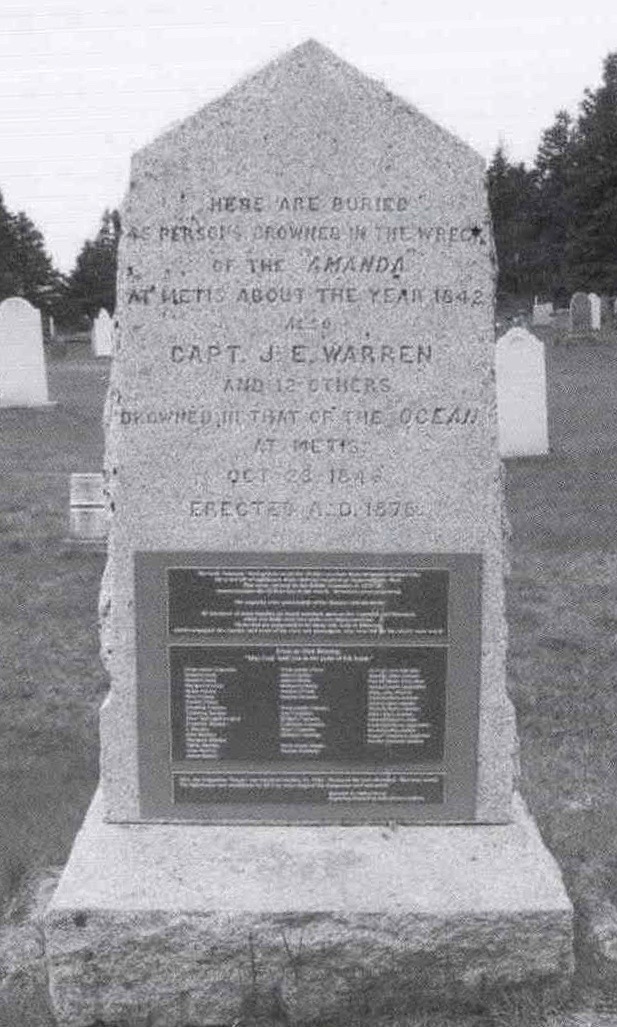Maritime Disasters – Putting Metis on the Map

Commemorative monument
Commemorative monument erected in the Leggatt’s Point cemetery in tribute to the victims of the shipwreck of the Amanda, which occurred in 1841
Heritage Lower St. Lawrence Collection
How do you calculate disaster? Is it the number of lives lost, the pain and suffering caused, or the damage to material and property?
The cairn in the graveyard at the Leggatt’s Point Cemetery commemorates the greatest maritime disaster to touch Metis – the sinking of the Amanda in October, 1841. Bound for Quebec City from Limerick, the ship took 41 down with it, mostly Irish immigrants from Limerick, Clare, Cork, Galway and Dingle – passengers seeking a new life in British North America. Only the captain, two seamen, two apprentices and ten passengers survived. The cairn was erected decades later, a sign of the community’s wish to mark this singular event.
The Amanda was not Metis’s only maritime disaster. Several decades earlier, the Montmorenci had gone to the bottom. Then there were the disasters that did not happen, like the Allan Line’s SS Polynesian that was heading towards Mount Misery in a thick fog in May, 1876 with 1,200 passengers on board when one of the passengers raised the alarm just in time for the vessel to reverse its course.
The graveyard of stranded and sunken vessels was one of the reasons why local leaders and ship owners pressured the government of Canada to erect a lighthouse. The first lighthouse was completed in 1874. It led to a reduction in shipping accidents. But close calls continued and remain a reality to the present day.

